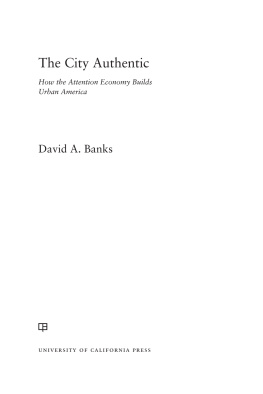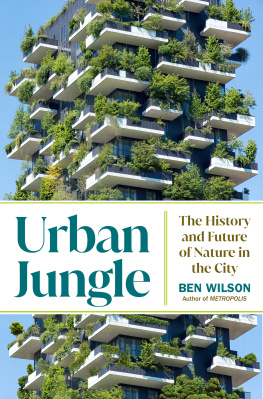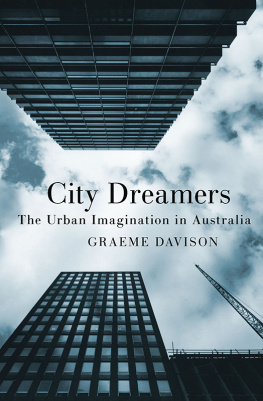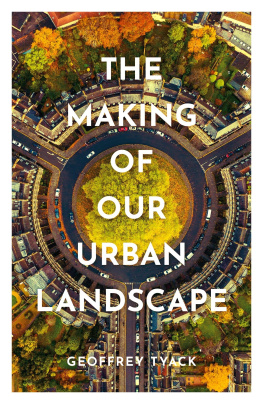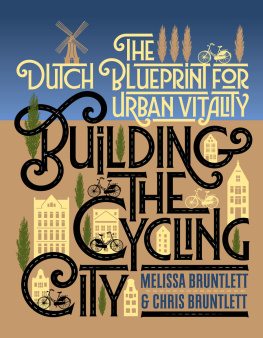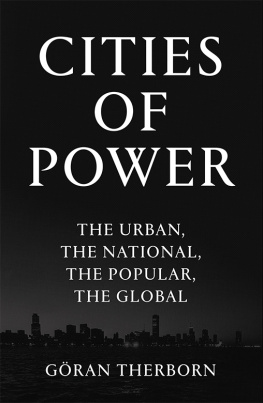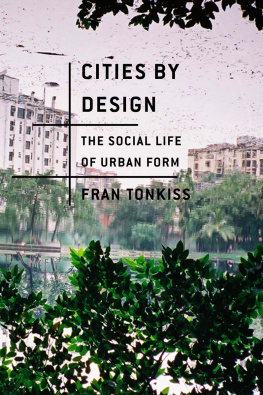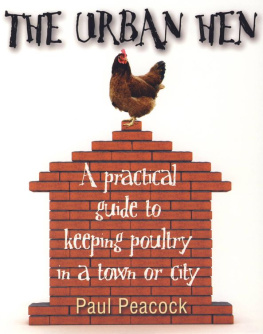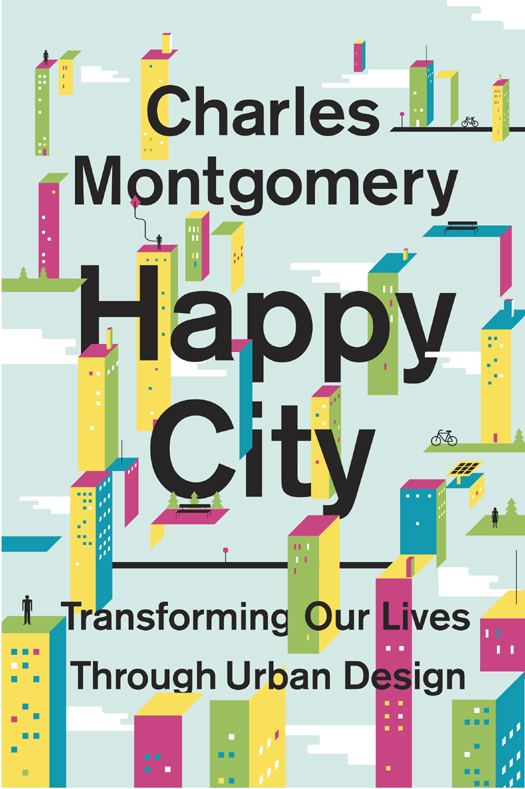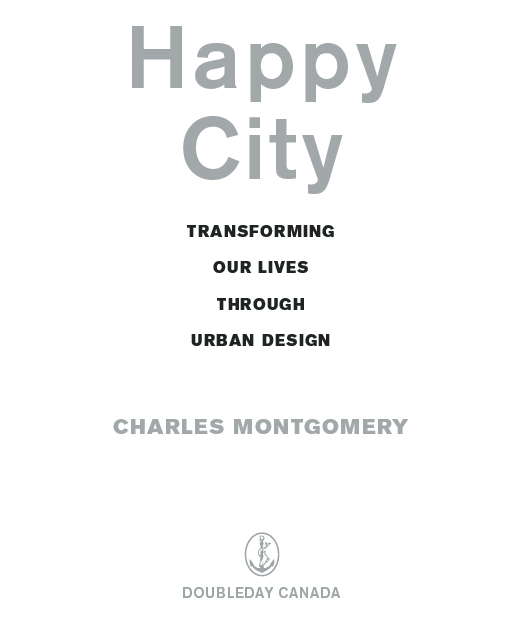ALSO BY CHARLES MONTGOMERY
The Last Heathen: Encounters with Ghosts and
Ancestors in Melanesia
Copyright 2013 Charles Montgomery
All rights reserved. The use of any part of this publication, reproduced, transmitted in any form or by any means electronic, mechanical, photocopying, recording or otherwise, or stored in a retrieval system without the prior written consent of the publisheror in the case of photocopying or other reprographic copying, license from the Canadian Copyright Licensing Agencyis an infringement of the copyright law.
Doubleday Canada and colophon are registered trademarks of Random House of Canada Limited.
Grateful acknowledgment is made for permission to reprint a haiku from Honku:
The Zen Antidote to Road Rage by Aaron Naparstek, copyright 2003
by Villard Books. Reprinted by permission of Aaron Naparstek.
Library and Archives Canada Cataloguing in Publication
Montgomery, Charles, 1968-, author
Happy city : transforming our lives through urban design / Charles Montgomery.
Includes bibliographical references.
eBook ISBN 978-0-385-66913-9
1. City planning. 2. Public spacesPlanning. 3. ArchitectureHuman factors.
4. Architecture and society. 5. Happiness. I. Title.
HT166.M66 2013 307.1216 C2011-900111-X
C2012-907032-7
Published in Canada by Doubleday Canada,
a division of Random House of Canada Limited,
a Penguin Random House Company
www.randomhouse.ca
We acknowledge the support of the Canada Council for the Arts, which last year invested $157 million to bring the arts to Canadians throughout the country.
Nous remercions le Conseil des arts du Canada de son soutien. Lan dernier, le Conseil a investi 157 millions de dollars pour mettre de lart dans la vie des Canadiennes et des Canadiens de tout le pays.
v3.1
Contents
Mobilicities I: How Moving Feels, and Why
It Does Not Feel Better
The Mayor of Happy
There is a myth, sometimes widespread, that a person need only do inner work, in order to be alive like this; that a man is entirely responsible for his own problems; and that to cure himself, he need only change himself The fact is, a person is so far formed by his surroundings, that his state of harmony depends entirely on his harmony with his surroundings.
Christopher Alexander,
The Timeless Way of Building
I chased the politician through the bowels of a dull cement office block on the edge of a twelve-lane freeway. Everything about him suggested urgency. He hollered with the hurried fervor of a preacher. He wore the kind of close-trimmed beard favored by men who dont like to waste time shaving. He jogged through the buildings basement parking deck in a long-legged canter, like a center forward charging for a long pass.
Two bodyguards trotted behind him, their pistols jostling in holsters. There was nothing remarkable about that, given his professionand his locale. Enrique Pealosa was a perennial politician on yet another campaign, and this was Bogot, a city with a spectacular reputation for kidnappings and assassination. What was unusual was this: Pealosa didnt climb into the armored SUV typical of most public figures in Colombia. Instead, he hopped on a knobby-tired mountain bike and quickly cranked his way up a ramp into the searing Andean sunlight. Then he was off, jumping curbs and potholes, riding one-handed, weaving across the pavement, and barking into his cell phone while his pin-striped trousers flapped in the breeze. His bodyguards, a photographer, and I all pedaled madly behind, like a throng of teenagers in the wake of a rock star.
A few years earlier, this ride would have been a radical andin the opinion of many Bogotanossuicidal act. If you wanted to be assaulted, asphyxiated by exhaust, or run over, Bogots streets were the place to be. But now it was 2007, and Pealosa insisted that things had changed. We would be safe. The city had gotten happier, thanks to his plan. Happierthat was the word he used over and over again, as though he owned it.
Young women giggled as he passed. Overall-clad laborers waved.
Mayor! Mayor! a few of them shouted in Spanish, though it had been six years since Pealosa had held that job, and his campaign to regain it had barely begun. He waved back with his phone hand.
Buenos das, hermosa! he said to the girls.
Cmo le va? he answered the men.
Hola, amigo! he offered to anyone who looked his way.
Were living an experiment, he finally yelled back at me as he pocketed his cell phone. We might not be able to fix the economy. We might not be able to make everyone as rich as Americans. But we can design the city to give people dignity, to make them feel rich. The city can make them happier.
There it was, the declaration I have seen bring tears to so many eyes with its promise of urban revolution and redemption.
Its been six years since my ride with the Mayor of Happy, but the memory has remained with me, as vivid as the Andean sun. That was the day the journey began.
You may never have heard of Enrique Pealosa. You may not have been among the crowds that gave him a heros welcome in New York, Los Angeles, Singapore, Lagos, or Mexico City over the last decade. You may never have seen him raise his arms like an evangelist or holler his philosophy over the noise of a hundred idling car engines. But his grand experiment and his even grander rhetoric inspire an urbanist fervor wherever he goes. Pealosa has become one of the central figures in a movement that is changing the structure and soul of cities around the world.
I first saw Pealosa work his rhetorical magic back in the spring of 2006. The United Nations had just announced that some day in the following months, one more child would be born in an urban hospital or a migrant would stumble into a metropolitan shantytown, and from that moment on, more than half the worlds people would be living in cities. Hundreds of millions more were on their way. By 2030 almost five billion of us will be urban. That spring, Habitat, the UNs agency for human settlements, called thousands of mayors, engineers, bureaucrats, and do-gooders together for the World Urban Forum. The delegates met in a harborside convention center in Vancouver to figure out how to save the worlds exploding cities from disaster.
The world had little inkling of the great recession slouching on the horizon, yet the prognosis was bleak. The problem? On the one hand, cities were pumping out most of the worlds pollution and 80 percent of humanitys greenhouse gas emissions. On the other, all predictions suggested that cities were going to be slammed by the effects of climate change, from heat waves and water scarcity to waves of migrants running from droughts, floods, and water wars. The experts agreed that cities would bear more than three-quarters of the cost of adapting to global warming. They would be short on energy, tax revenue, and jobs. There seemed to be no way they were going to be able to help citizens meet the goals of security and prosperity that urbanization had always seemed to promise. The gathering was sobering.


